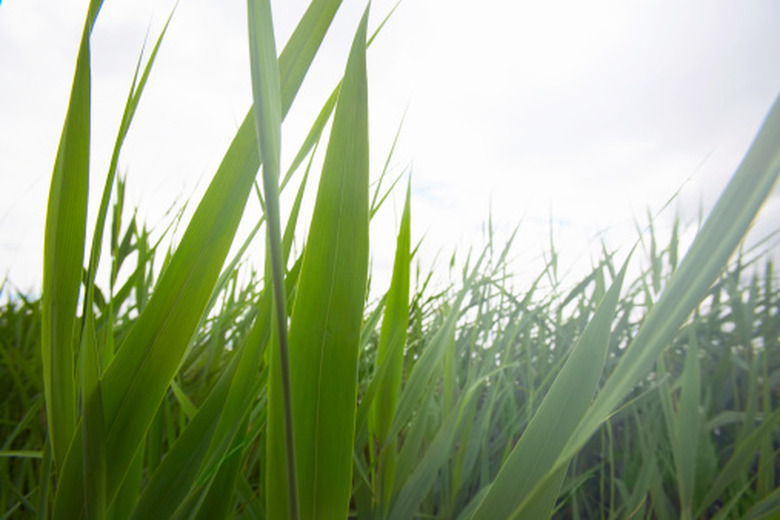Non-Living Things That Grow
If asked to quickly come up with a list of things that grow, many people would most likely either name some living things like weeds, children and mushrooms or things associated with living things like hair, fingernails and beards. This makes sense, since things that can change their size without any outside input (other than food and water sources) usually qualify as living things.
Some of the exceptions to this observation, however, are fascinating to observe regardless of what spurs the growth in question or what purpose it ultimately serves. Some of these non-living systems may seem alive, but they're not.
Non-Living Things Definition
Non-Living Things Definition
Non-living things exist but lack the characteristics of living things. Living things exhibit growth, movement, reproduction, respiration and metabolism. Living things use energy, respond to stimuli and adapt to their environment. Non-living things do not grow through internal metabolic functions but by adding on from the outside. Some things may seem like non-living organisms by responding, moving and reacting, but these apparent responses occur only from outside influences. Non-living things do not need energy to continue to exist.
Crystals Grow and Grow
Crystals Grow and Grow
A crystal is an inorganic (not alive, not from something alive) homogeneous solid (meaning a solid with the same properties at all points) with a three-dimensional, repeated ordering of atoms or molecules.
Crystals are created via the process of crystallization, which is essentially a transformation from utter disorder to perfection. Unlike living things, crystals do not grow by adding mass from within; instead, they grow when matching molecules are deposited on the outside of the crystal surface. Crystals grow in one of three primary ways: from a vapor, from a solution or from a melt. Regardless, they all turn out perfectly symmetrical, if they have room to grow.
There is no theoretical limit to how large crystals can grow; one beryl crystal in Madagascar reached nearly 60 feet in length. The exposed portion of a single crystal of microcline (a type of feldspar) found in Colorado, USA, measured 118 feet long, but could have originally been over 160 feet long.
Glaciers Grow and Move
Glaciers Grow and Move
Glaciers form when, over a period of years, more fallen snow accumulates than melts, resulting in the formation of ice owing to physical compaction. This occurs high in mountains where snow is the exclusive type of precipitation and never completely melts. Depressions in the side of the mountain catch years' worth of snow, giving it a place to form ice crystals under its own accumulating weight. Once this weight reaches a certain level, the depression on the mountainside is no longer able to anchor the ice in place, and the ice begins to slowly slide along. The ice, because it is moving, is now officially a glacier.
Growth ceases when enough of the glacier reaches a lower, warmer elevation so that the rate of melting of ice at the bottom equals or exceeds the rate of new ice addition at the top.
Mountains Grow and Change
Mountains Grow and Change
The classic view of mountain formation is that they are created by seismic activity in Earth's crust, with the large tectonic plates that form the crust rubbing against one another and causing a rapid (in geological terms) rise of rock from the baseline level at this junction. While this does in fact occur, more recent discoveries suggest that climate and erosion play a much greater role in mountain growth and shaping than previously believed. In fact, some geologists theorize that no one element alone – tectonics, erosion or climate – is by itself sufficient to allow the formation of mountains and mountain ranges, at least any that humans would recognize as such. In addition, erosion and climate are themselves closely linked, with wetter conditions favoring more erosion. As mountains get bigger, they often take on their own climates, featuring more moisture and snow as their surfaces are eroded.
Abstract Concepts
Abstract Concepts
For fun, consider the abstract – that is, not only non-living, but non-physical – things that can be said to grow. Cultural movements, like a trend toward or away from skinny jeans, "grow." Confidence, ego, sadness and elation may be said in the literary sense to grow, albeit not all at the same time in the same person.
Cite This Article
MLA
Beck, Kevin. "Non-Living Things That Grow" sciencing.com, https://www.sciencing.com/nonliving-things-grow-8349728/. 17 October 2018.
APA
Beck, Kevin. (2018, October 17). Non-Living Things That Grow. sciencing.com. Retrieved from https://www.sciencing.com/nonliving-things-grow-8349728/
Chicago
Beck, Kevin. Non-Living Things That Grow last modified March 24, 2022. https://www.sciencing.com/nonliving-things-grow-8349728/
